50+ Sample Needs Analysis
-
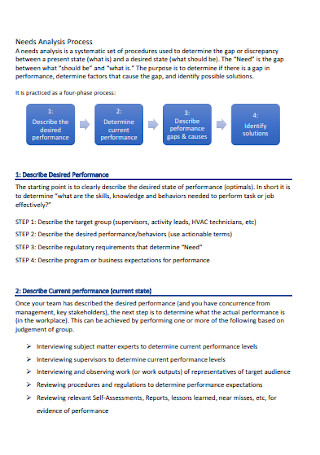
Needs Analysis Process Template
download now -
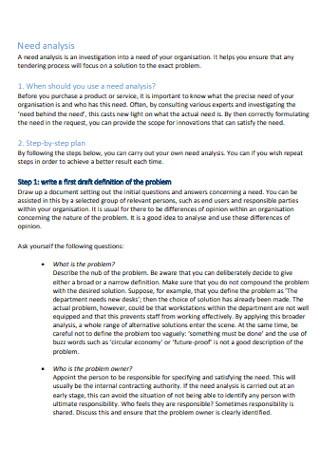
Bio Need Analysis
download now -
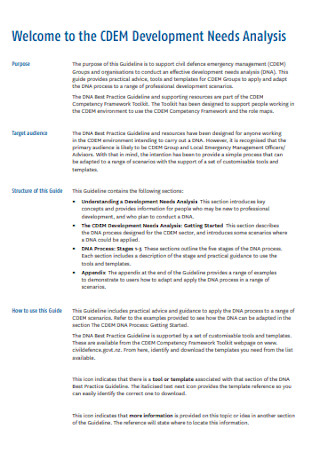
Development Needs Analysis
download now -
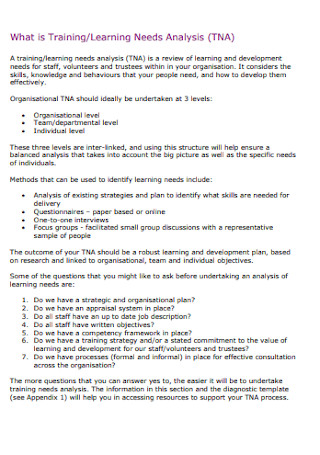
Learning Needs Analysis
download now -

Training Needs Analysis Report
download now -
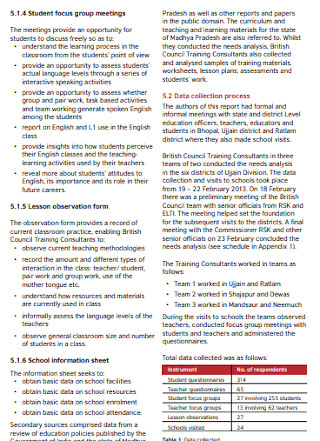
Student Needs Analysis Template
download now -
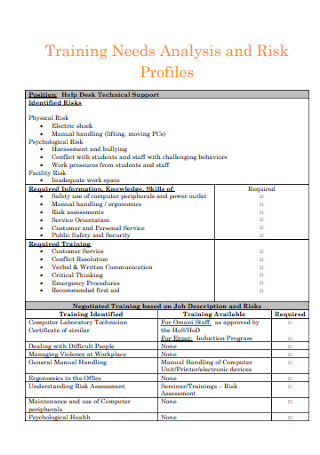
Risk Training Needs Analysis
download now -
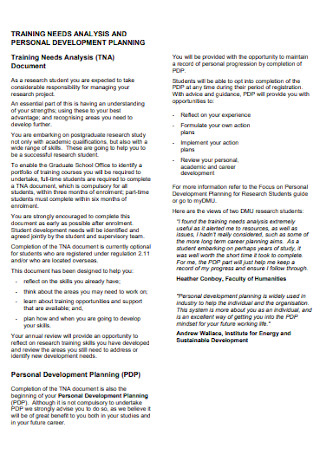
Personal Training Need Analysis
download now -
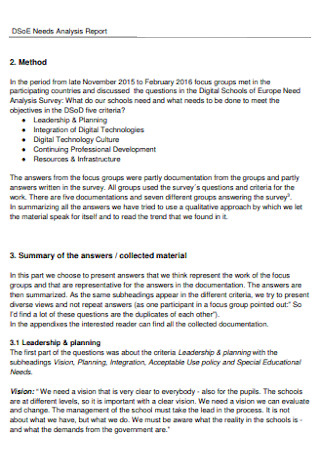
Needs Analysis Report
download now -
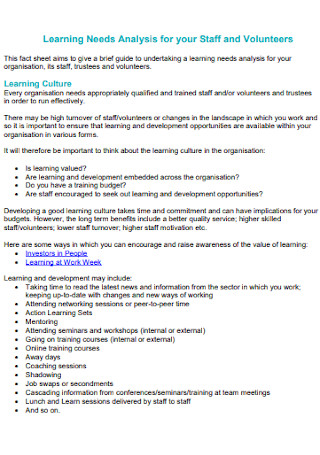
Learning Needs Analysis for Staff
download now -

Firm Element Needs Analysis
download now -
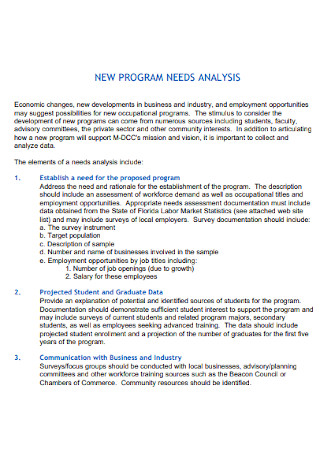
New Program Needs Analysis
download now -
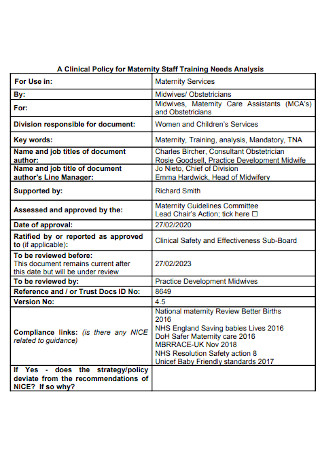
Staff Training Needs Analysis
download now -
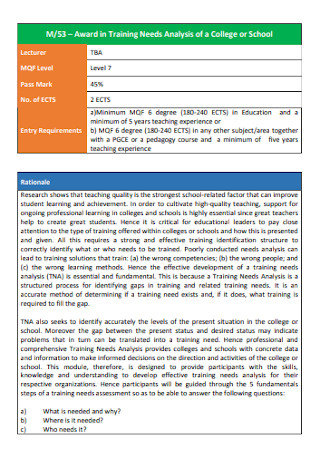
Needs Analysis of a College
download now -

Company Needs Analysis
download now -

General Needs Analysis Template
download now -
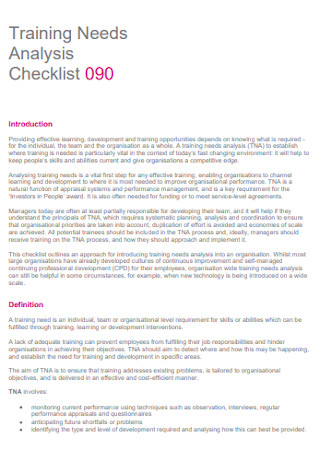
Training Needs Analysis Checklist
download now -
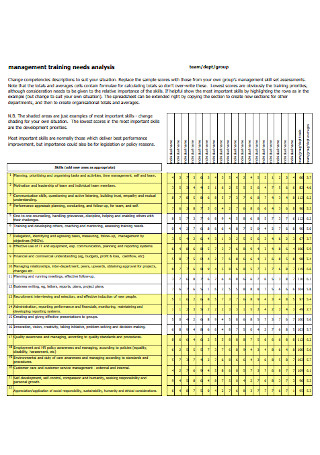
Management Training Needs Analysis
download now -
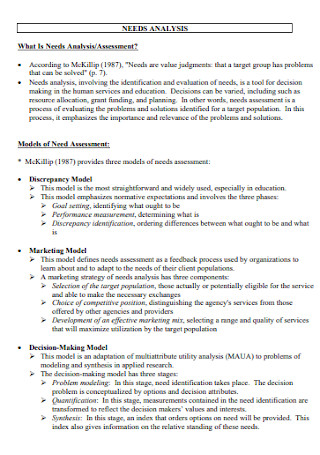
Simple Needs Analysis Template
download now -
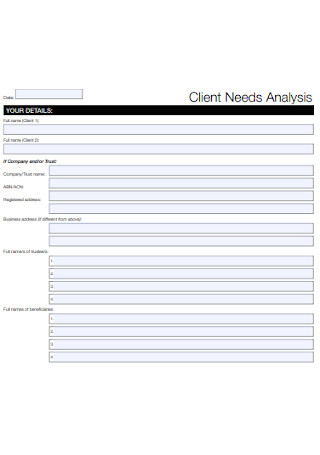
Client Needs Analysis
download now -
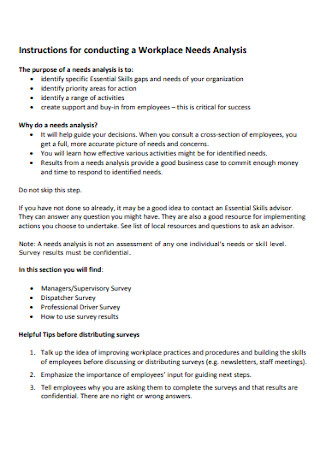
Workplace Needs Analysis Template
download now -
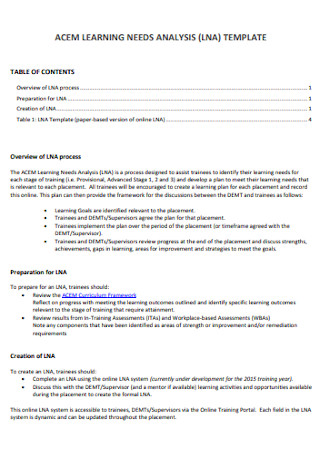
Learning Needs Analysis Template
download now -
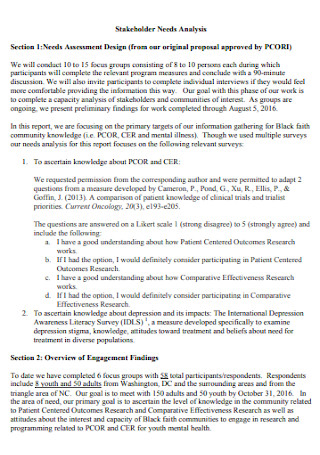
Stakeholder Needs Analysis
download now -
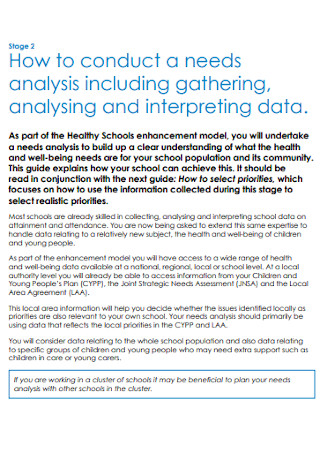
Data Needs Analysis Template
download now -
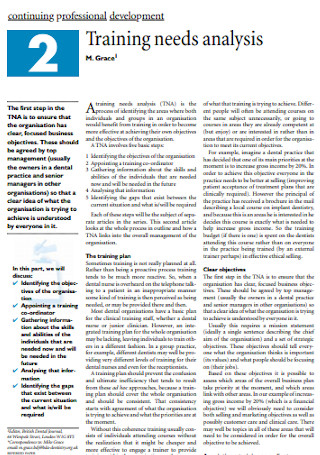
Professional Training Needs Analysis
download now -
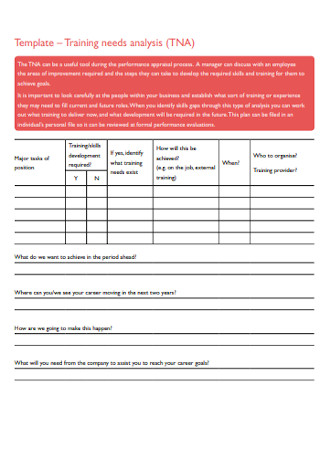
Standard Needs Analysis Template
download now -
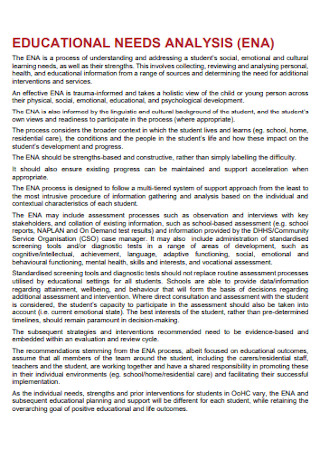
Educational Needs Analysis Template
download now -
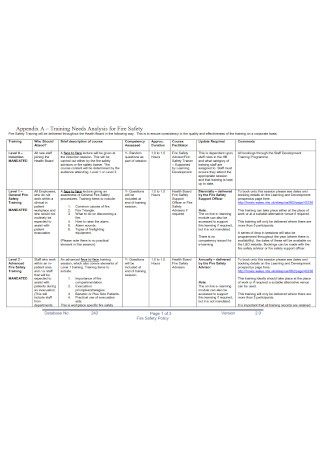
Needs Analysis for Fire Safety
download now -
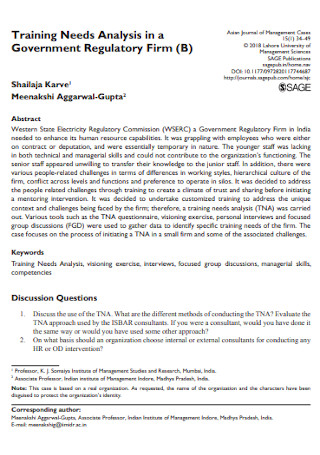
Government Needs Analysis Template
download now -

Needs Analysis Policy Template
download now -
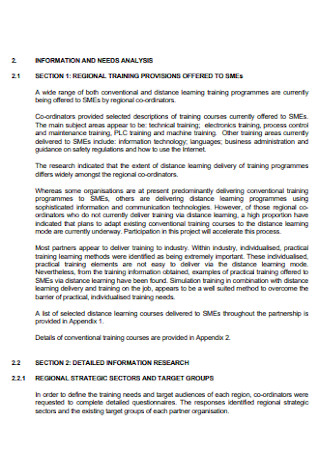
Needs Analysis Report Example
download now -
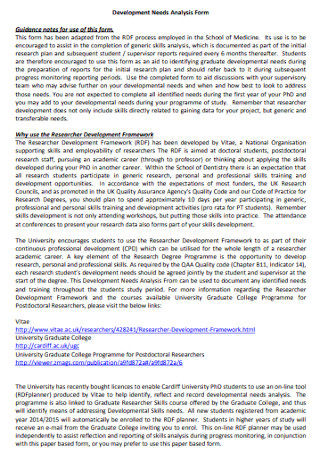
Development Needs Analysis Form
download now -
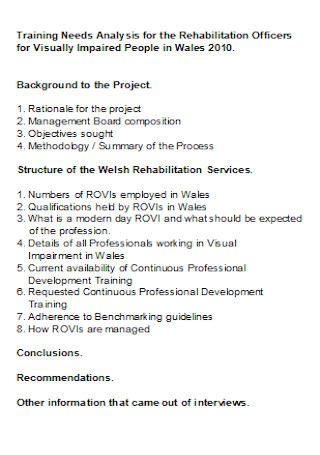
Needs Analysis for Rehabilitation Officers
download now -

Partnership Needs Analysis Template
download now -
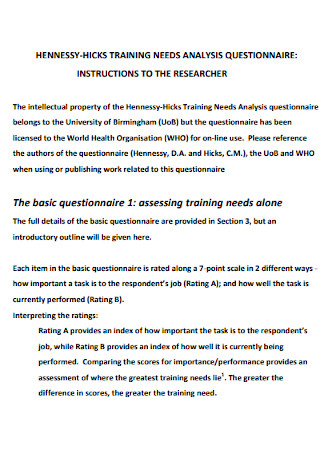
Needs Analysis Questionnaire
download now -
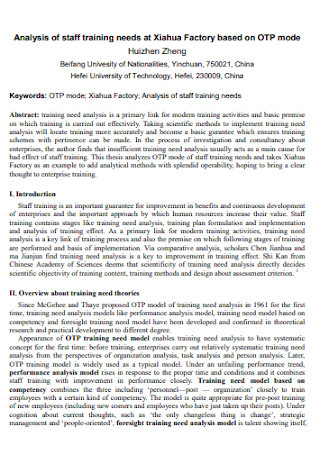
Analysis of Staff Training Needs
download now -
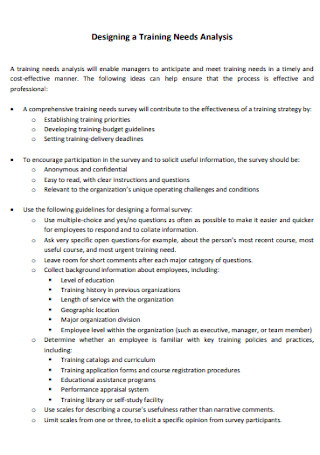
Designing Needs Analysis Template
download now -
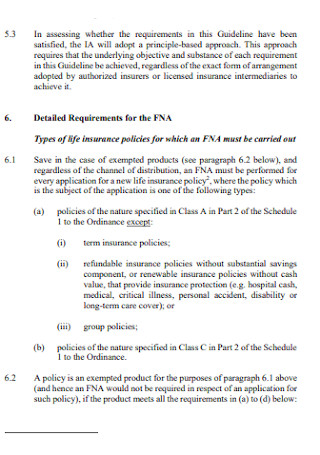
Financial Needs Analysis
download now -
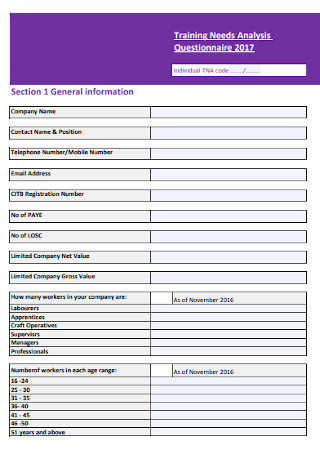
Needs Analysis Questionnaire Example
download now -
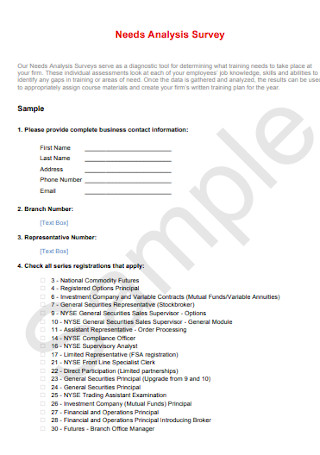
Needs Analysis Survey Template
download now -
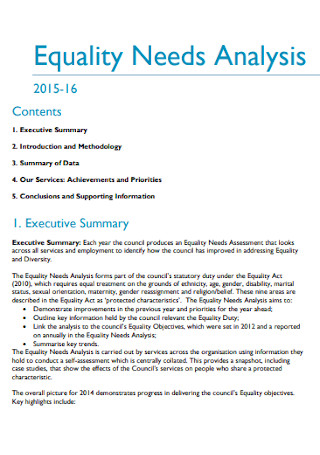
Equality Needs Analysis
download now -
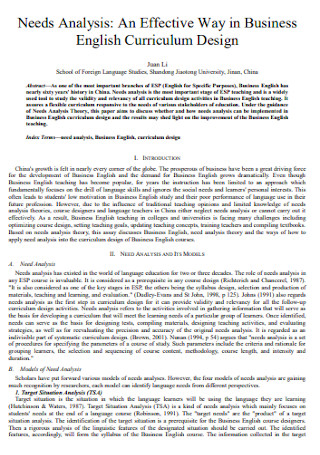
Business Needs Analysis
download now -
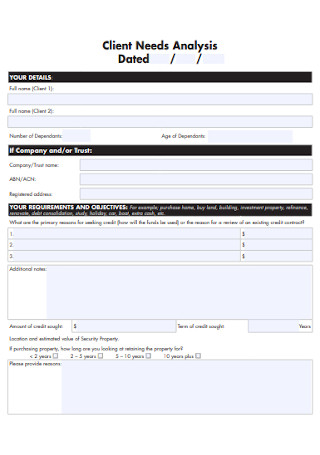
Client Needs Analysis Example
download now -
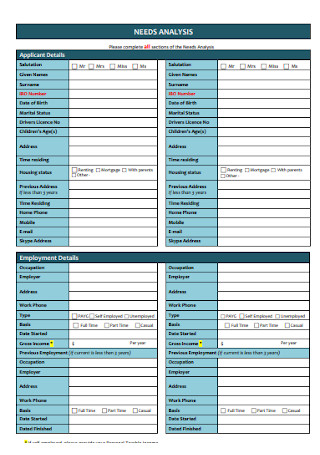
Formal Needs Analysis Template
download now -
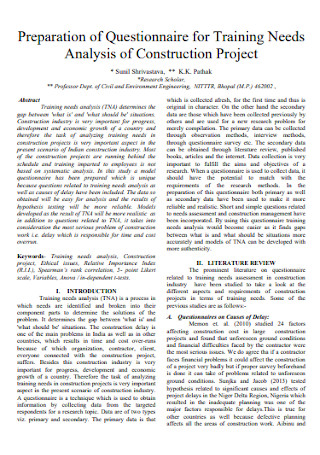
Construction Project Needs Analysis
download now -

Needs Plan Analysis
download now -
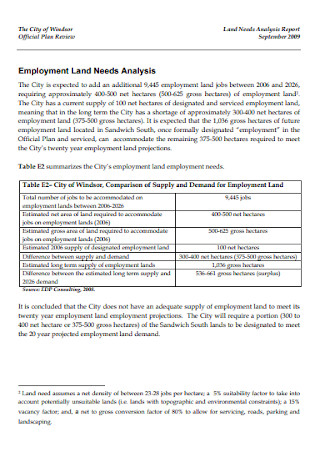
Employment Land Needs Analysis
download now -
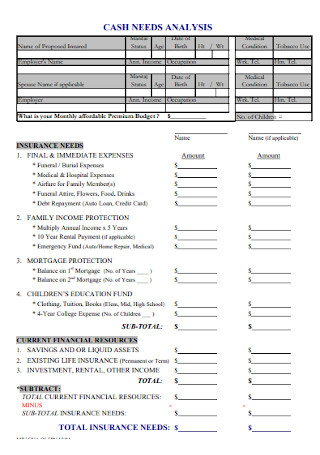
Case Needs Analysis Template
download now -
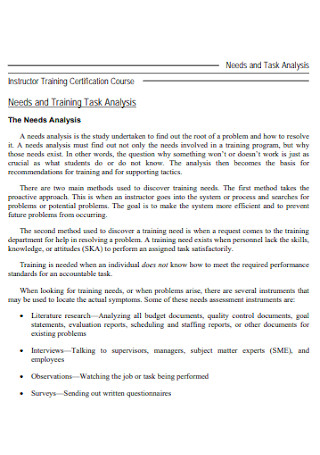
Need and Task Analysis
download now -
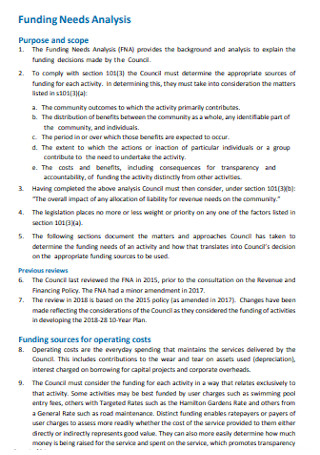
Funding Needs Analysis
download now -

Needs Analysis Worksheet
download now
FREE Needs Analysis s to Download
50+ Sample Needs Analysis
What is a Needs Analysis?
Benefits of a Needs Analysis
How to Write a Needs Analysis
Methods in Needs Analysis
FAQs
When do you use needs analysis?
Should a reference page or bibliography be included in a needs analysis?
What happens when a needs analysis is poorly done?
What should a needs analysis report include?
What is a Needs Analysis?
A needs analysis, or also known as gap analysis or a needs assessment, is a formal and systematic process of identifying and evaluating training that needs to be done for a specific individual or organization. Conducting a needs analysis can help find the needs or gaps that the employees or the organization need. These gaps are the difference between the current performance and the expected performance and need to be filled in.
For instance, when employees or team members are not performing well, the cause of their underperformance can be identified using different assessment methods like a training needs analysis. Once these gaps are determined, they can be used to effectively plan training needs based on their order of priority as well as in the decision-making and problem-solving processes.
Typically, a training needs assessment should be conducted periodically to assess the effectiveness of the organization’s programs or employees’ fit to the company. Training needs assessments are often conducted during new hire’s orientation to gauge the employees’ knowledge and skills and determine the type of training that they need.
This is an important aspect that management and the company as a whole should understand—94% of workers stay with the company if they feel that they are being invested in. That’s why it’s crucial that management take needs analysis seriously. Remember, the main goal of a needs analysis or assessment is to identify any underlying employee or program issues that affect performance and effectiveness and to provide the appropriate and necessary approach to urgent and emerging problems.
Organizations usually conduct a needs analysis to collect information to determine if there is a current need for training and development and if there is, what type of training is desired to address this need. The analysis will involve the assessment of gaps between the desired performance and the current actual performance to know why the need exists. If the root cause of the problem is not attributable to the employees or team members, conducting training among them may not be the best solution for it. For instance, a skilled employee is not delivering on the desired outcome but they are equipped with the skills to do so, training might not be the appropriate solution. Instead, it can be addressed by considering changes in the system of compensation and awards to motivate them.
Benefits of a Needs Analysis
LinkedIn’s 2021 Workplace Learning Report found that upskilling and reskilling should be the top focus areas of companies. A needs analysis can fill in the gains wanted in order to retain and keep their employees happy. This can help employees manage through the changes in the workplace as well as quickly pivot their learning so they may show better work performance.
A business needs analysis offers an array of benefits to organizations such as the following:
How to Write a Needs Analysis
No matter how big or small an organization or a team is, some challenges will surely arise and it only takes one too many unanticipated problems or issues that can make or break them. This is why any company has to have a needs analysis template whenever there are performance issues come up. Deficiencies must be addressed immediately through an organizational needs analysis. Follow these steps for a systematic approach in identifying gaps between actual and desired job performance and the factors that prevent expected positive outcomes
Step 1: Assess the Situation
For most people, before purchasing a product or a service, they must know what it is about, who it is for, and why it’s needed. Similar to trainings and other interventions, before you can create and conduct one, you have to know what is the organization or the employees’ exact needs, when it’s needed, and how it will be provided.
It would also be helpful to consult with various experts to investigate why there is a “need behind the need”, which will ensure that you are addressing the correct problems at hand. And by formulating the right training programs and interventions, you will be able to satisfy that need.
Step 2: Describe the Problem and Identify Relevant Parties
In your needs assessment, the first thing you need to ask is “What are the performance expectations or the desired outcomes?” This will help determine the skills, knowledge, and behavior needed to perform the job effectively. In this step, you should also consider the position or duties along with the desired performance. In other words, these are the regulatory requirements that have to be fulfilled by the role.
When you describe the problem, be aware that you can either describe it in either specific or broad details. But it is also important that problems are not compounded and should have an appointed person responsible for specifying and satisfying that need.
Step 3: Determine Desired Performance vis-à-vis the Current Performance
This part of the needs analysis template is perhaps the most crucial step in creating a needs analysis. Everything that goes in this section should be accurate—the management and key stakeholders should have concurred on the desired performance and the entity or program that’s being assessed should be aware of and agree to their current performance evaluation.
Based on the judgment of the group, this step can be achieved through several methods like focused group discussions, surveys, and other relevant documents like self-assessments, reports, lessons learned and key takeaways, and even near misses.
Step 4: Analyze and Interpret Performance Gaps and Causes
A needs assessment is a data-intensive report so it’s important that prior to reaching this step, you have fully identified the problem, relevant individuals, and performance data of the program, organization, or team members. This can be presented through data charts and graphs to make it more understandable for your readers especially the decision-makers.
Important points and conclusions drawn from major findings should be highlighted and clearly stated in the headlines or the introduction. Make sure that they stand out and can be easily spotted so they won’t be missed during deliberation.
Step 5: Identify solutions and Recommend Next Steps
An analysis isn’t complete without any recommendations on how to proceed or the next steps to be taken. This will provide the management or the individual direction on where to go and how to proceed to improve performance and settle any issues at hand. The next action steps should be outlined for the decision-makers’ quick reference.
It is possible that you might need to gather more data from your initial needs analysis so you can draw more conclusions or it might be enough to identify specific solutions to the current problems. Either way, make sure to note this in the report by outlining future directions and the solutions to bridge the gap.
Methods in Needs Analysis
When a needs analysis is required, there are many different methods that you can use to conduct one. There is no minimum required number of ways to use to obtain the most accurate and complete status of a training need and any organization may utilize as many as possible. The following are among the most common assessment methods used during a needs analysis:
Human Resource Records
The HR records can provide data about organizational or employee performance. It can include accident and safety reports, attendance records, grievances filed, exit interviews, performance evaluations, and company records such as production, sales, and cost reports, among others.
In-depth Interviews
Consider conducting in-depth interviews to get new information on training needs. Data gathered through the interviews will contribute to the affirmative actions that can be done to address the training needs of employees or process improvements.
Focus Groups
Focus group discussion, as the name implies, simultaneously asks questions to a number of individuals about their training needs. Unlike individual in-depth interviews, focus groups can only scratch the surface but it is perfect for getting the pulse of group needs.
Observations
There are several sources of observations that may be used in a needs assessment. It can include on-the-job performance, work setting simulations, and written work samples.
Survey or Questionnaires and Sampling
Surveys or questionnaires are generally standardized formats in data gathering. It can be self-administered by hand or computer, sent in-mail, or by phone. Sampling, like similar to surveying and focuses on smaller and selected groups.
Every organization may select at least one of the most appropriate methods to use. But when choosing one, factors such as organization size, technology, organizational structure, training staff, facilities, and budget should be considered.
FAQs
When do you use needs analysis?
Needs analysis is usually considered:
- When there is a request for upskilling or reskill training or a change in the current training
- To help in the implementation of new requirements that were issued
- When job or work underperformance has been identified or a program is not working during the execution process (identified through observation, assessment, audits, etc).
Should a reference page or bibliography be included in a needs analysis?
Listing external sources and appendices of data, as well as other internal data referenced in the report, will be helpful to the decision-makers. This would make it easier for them to locate the data during deliberation and will be considered when making their decision.
What happens when a needs analysis is poorly done?
Correctly identifying the problem and who needs to be trained is the core of any effective training program. If the needs analysis was not conducted properly, it can lead to crafting a training solution that trains the wrong competencies, wrong people, and wrong learning methods.
What should a needs analysis report include?
The needs analysis report should contain the outcome of the process. It should include the following:
- A short description of the needs analysis process and the purpose of conducting one
- Major findings and outcomes identified
- Prioritized needs and the criteria used in doing so
- Recommended action plan and next steps
When there is a problem within the organization or a team, needs analysis can be used to find the root cause of the problem. This type of analysis defines any deficiencies or problems to be able to provide solutions specific to those issues. In other words, it can be thought of as the process of identifying the gaps between expectations and reality.
